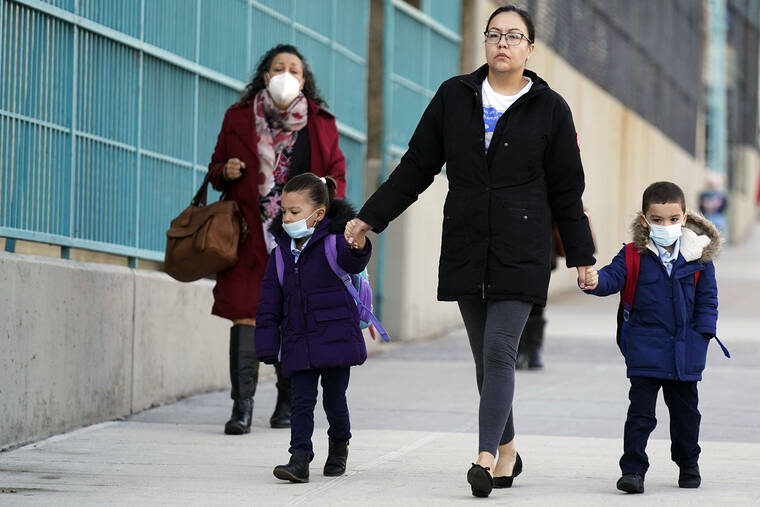Number of COVID patients in US hospitals reaches record low
NORFOLK, Va. — COVID-19 hospitalization numbers have plunged to their lowest levels since the early days of the pandemic, offering a much needed break to health care workers and patients alike following the omicron surge.
The number of patients hospitalized with the coronavirus has fallen more than 90% in more than two months, and some hospitals are going days without a single COVID-19 patient in the ICU for the first time since early 2020.
ADVERTISING
The freed up beds are expected to help U.S. hospitals retain exhausted staff, treat non-COVID-19 patients more quickly and cut down on inflated costs. More family members can visit loved ones. And doctors hope to see a correction to the slide in pediatric visits, yearly checkups and cancer screenings.
“We should all be smiling that the number of people sitting in the hospital right now with COVID, and people in intensive care units with COVID, are at this low point,” said University of South Florida epidemiologist Jason Salemi.
But, he said, the nation “paid a steep price to get to this stage. … A lot of people got sick and a lot of people died.”
Hospitalizations are now at their lowest point since summer 2020, when comprehensive national data first became available. The average number of people hospitalized with COVID-19 in the last week nationwide dropped to 11,860, the lowest since 2020 and a steep decline from the peak of more than 145,000 set in mid-January. The previous low was 12,041 last June, before the delta variant took hold.
The optimistic trend is also clear in ICU patient numbers, which have dipped to fewer than 2,000, according to the U.S. Department of Health and Human Services.
“We’re beginning to be able to take a breath,” said Dr. Jeffrey Weinstein, the patient safety officer for the Kettering Health hospital system in western Ohio.
COVID-19 patients had filled 30% of Kettering Health’s nearly 1,600 hospital beds back in January, Weinstein said. Kettering’s eight hospitals now average two to three COVID-19 admissions a day — and sometimes zero.
And while Salemi agreed this is a good time for an exhausted health care system to take a breath, he warned that the public health community needs to keep an eye on the BA.2 subvariant of omicron. It’s driving increases in hospitalizations in Britain, and is now estimated to make up more than half of U.S. infections.
“We’re probably under-detecting true infections now more than at any other time during the pandemic,” Salemi said.
For now at least, many hospitals are noting the low numbers.
In California on Thursday, UC Davis Health tweeted that its intensive care unit had no COVID-19 patients for two consecutive days for the first time in two years.
“The first COVID-19 patient to arrive in our ICU did so in February 2020, and the unit treated at least one positive individual every day since, for at least 761 consecutive days,” the hospital system said.
Toby Marsh, the chief nursing and patient care services officer, said in a statement that they hope the numbers “are indicative of a sustained change.”
In Philadelphia, patients are spending less time in the Temple University Health System because there are no longer backlogs for MRIs, CT scans and lab tests, said Dr. Tony Reed, the chief medical officer.


